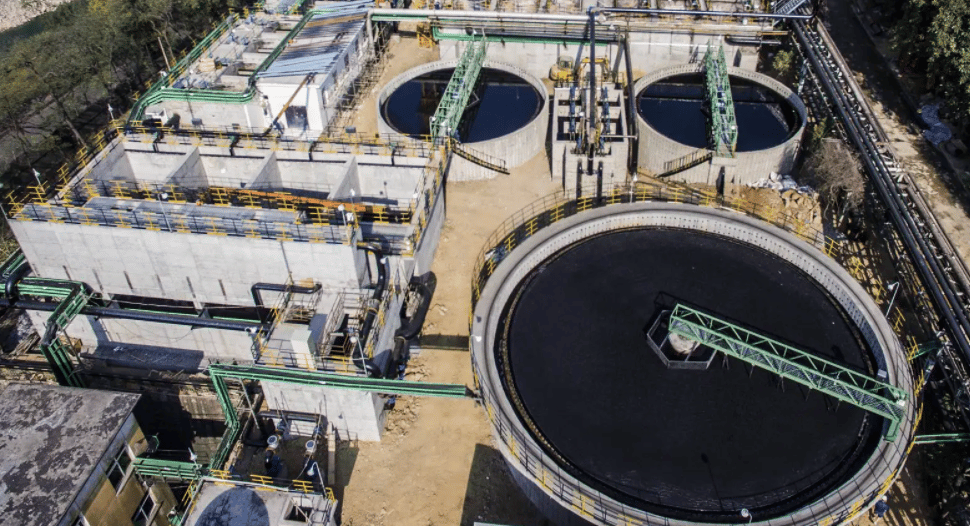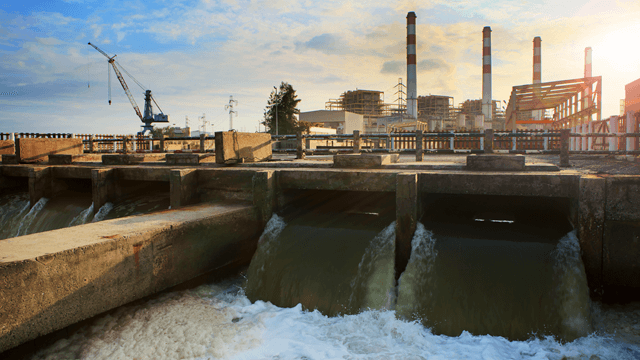Industrial Waste Water Treatment-- Sustainable Solutions for Industrial Water Management
Industrial Waste Water Treatment-- Sustainable Solutions for Industrial Water Management
Blog Article
Key Strategies in Hazardous Waste Water Treatment Processes
The therapy of commercial wastewater is an important facet of environmental monitoring, entailing an array of strategies made to reduce the influence of impurities. From the basic physical techniques that separate solids to the sophisticated chemical and organic processes that target specific contaminants, each technique plays a vital function in achieving water high quality criteria. Innovations in technologies such as membrane layer purification and advanced oxidation processes use cutting-edge services for improving therapy efficacy. Comprehending exactly how these approaches interconnect and their ramifications for sustainability increases vital questions about the future of wastewater administration in sector.
Physical Therapy Approaches
Just how successfully can physical therapy techniques address the complexities of commercial wastewater? Physical therapy methods play a pivotal duty in the preliminary phases of wastewater administration, concentrating mainly on the elimination of solids and huge particulates. Methods such as flotation, sedimentation, and filtering are essential for decreasing the concentration of put on hold solids, consequently improving the efficiency of succeeding therapy procedures.
Sedimentation includes the gravitational settling of solids, permitting the splitting up of larger materials from the wastewater. This method is specifically efficient in clearing up water prior to chemical or biological therapies. Filtering, on the other hand, makes use of different media to capture particle matter, guaranteeing that smaller pollutants are removed. This strategy can be tailored to accommodate various types of commercial effluents, producing more clear effluent streams.
Furthermore, flotation protection techniques, which utilize air bubbles to lift put on hold solids to the surface for elimination, work in treating wastewater with high focus of fats, oils, and greases. Generally, physical treatment techniques function as an essential very first step in the comprehensive monitoring of industrial wastewater, making sure that the load on subsequent therapy phases is reduced and boosting total treatment effectiveness.
Chemical Therapy Techniques
While physical therapy techniques prepared for efficient wastewater administration, chemical therapy methods are vital for dealing with the extra complicated contaminants usually discovered in commercial effluents. These techniques make use of different chemical representatives to precipitate, counteract, or oxidize dangerous substances, making sure a much more comprehensive elimination of pollutants.
One typical approach is coagulation and flocculation, where chemical coagulants such as light weight aluminum sulfate or ferric chloride are contributed to promote the aggregation of suspended fragments. This process boosts solid-liquid separation, minimizing turbidity and boosting water high quality. In addition, neutralization processes are used to adjust the pH of wastewater, utilizing bases or acids to neutralize acidic or alkaline streams, respectively.
Oxidation-reduction reactions play an important function in degrading natural contaminants and microorganisms. Chemical oxidants like hydrogen, ozone, or chlorine peroxide are made use of to break down complicated natural substances, making them much less hazardous or a lot more biodegradable. Advanced oxidation processes (AOPs) integrate several oxidation methods to improve contaminant elimination effectiveness.
Organic Therapy Processes
The effectiveness of wastewater treatment is considerably improved by biological treatment processes, which harness the all-natural metabolic tasks of microbes to decay natural issue and get rid of toxins. Industrial Waste Water Treatment. These procedures mostly include anaerobic and aerobic digestion, each customized for details kinds of wastewater
Cardio treatment processes utilize oxygen to sustain microbial development, promoting the break down of organic toxins into co2 and water. Usual techniques include activated sludge systems, where oygenation storage tanks help with the blending of wastewater with microbes, and dripping filters, which encourage biofilm development on media surfaces.
Alternatively, anaerobic treatment procedures happen in the absence of oxygen, utilizing anaerobic germs to disintegrate organic issue, causing biogas production, an eco-friendly energy resource. Anaerobic digesters are usually used in commercial settings for this objective, efficiently reducing the quantity of sludge while generating beneficial biogas.
The selection of an organic treatment approach depends on wastewater features, treatment objectives, and regulatory criteria. The integration of organic processes in wastewater treatment not just enhances contaminant elimination effectiveness yet also advertises sustainability by minimizing chemical use and sustaining resource healing.
Advanced Oxidation Processes

Usual AOP methods consist of Fenton's photocatalysis, reagent, and ozonation. Fenton's reagent, a combination of hydrogen peroxide and ferrous iron, militarizes the formation of hydroxyl radicals, making it reliable for treating wastewater having phenolic compounds and various i thought about this other recalcitrant compounds. Ozonation utilizes ozone as a powerful oxidant, efficient in breaking down a variety of natural contaminants while all at once sanitizing the effluent. Photocatalysis uses light-activated catalysts, such as titanium dioxide, to improve oxidation responses and eliminate pollutants.
AOPs supply several advantages, including minimized sludge manufacturing and the ability to treat wastewater with high concentrations of organic contaminants. Nonetheless, the execution of AOPs requires careful consideration of functional specifications and cost-effectiveness, making certain that these advanced techniques are appropriately integrated into existing wastewater treatment systems.
Membrane Filtration Technologies

Microfiltration is efficient for getting rid of suspended solids and bacteria, while ultrafiltration targets smaller sized organic molecules and viruses. Nanofiltration links the space between ultrafiltration and turn around osmosis, successfully removing natural compounds and divalent ions. Reverse osmosis gives the greatest degree of filtration, made use of largely for desalination and getting rid of mono-valent webpage ions.
Membrane modern technologies supply numerous benefits, including reduced energy intake compared to conventional treatment approaches, modular design for scalability, and the potential for water healing and reuse. Challenges such as membrane layer fouling and the demand for routine upkeep must be dealt with to make sure system efficacy. In general, membrane layer purification technologies represent a vital element of contemporary industrial wastewater therapy strategies, advertising sustainability and resource preservation in water monitoring.
Final Thought
In verdict, industrial wastewater treatment uses a varied selection of methods, consisting of physical, chemical, organic, and progressed methods. Continued developments in these approaches will certainly additionally enhance the effectiveness and efficiency of wastewater therapy procedures in commercial settings.
The treatment of industrial wastewater is a crucial element of ecological management, involving an array of methods developed to mitigate the effect of contaminants.How efficiently can physical therapy methods address the complexities of commercial wastewater?Advanced oxidation processes (AOPs) represent a cutting-edge method in commercial wastewater treatment, designed to successfully degrade organic contaminants that are commonly resistant to traditional therapy techniques (Industrial Waste Water Treatment).In conclusion, commercial wastewater therapy employs a varied variety of techniques, consisting of physical, chemical, biological, and advanced approaches. Proceeded improvements in these approaches will certainly further enhance the performance and efficiency of wastewater therapy processes in commercial setups
Report this page